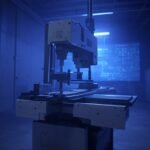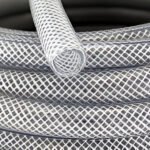Autoclave
Let’s Start Work
Together
Please feel free to contact us. We will get back to you with 1-2 business days. Or just call us now.
Autoclaves play a crucial role in the composite industry, particularly in the manufacturing and curing of composite materials. These materials, often used in aerospace, automotive, marine, and construction sectors, require specific processes to ensure the desired mechanical properties and structural integrity. Below are some key uses of autoclaves in the composite industry:
Strategic Partnership Between 3rd Eye Industries and Twenco CME BV Netherlands
- Global Reach and Experience: AKARMAK brings years of experience in the design and manufacturing of high-quality autoclaves for the composite industry. With a solid global footprint, AKARMAK has established itself as a trusted name in delivering cutting-edge autoclave solutions across various industries, including aerospace, automotive, and marine sectors.
- Innovative Solutions: Their deep understanding of the complexities in autoclave technology and its application across different industries allows AKARMAK to offer innovative solutions that meet diverse client needs. They have honed their expertise to provide advanced autoclave systems that ensure efficiency, reliability, and high performance.
- Local Expertise and Support: 3rd Eye Industries provides localized technical support and deep process knowledge. This includes a robust understanding of the composite manufacturing process, from raw materials to finished products. Their expertise allows them to customize solutions, troubleshoot, and provide on-the-ground support to ensure smooth operations.
- Tailored Solutions: 3rd Eye Industries specializes in adapting complex technologies to local needs, ensuring that customers receive optimized and highly efficient systems. They bridge any gaps between the global technology brought in by AKARMAK and the specific demands of local markets, ensuring that customers enjoy seamless, user-friendly experiences.
Autoclaves play a crucial role in the composite industry, particularly in the manufacturing and curing of composite materials. These materials, often used in aerospace, automotive, marine, and construction sectors, require specific processes to ensure the desired mechanical properties and structural integrity. Below are some key uses of autoclaves in the composite industry:
1. Curing of Composite Materials
– Curing Process: Autoclaves are primarily used for curing composite materials, such as carbon fiber, glass fiber, and aramid fiber, which are typically combined with thermosetting resins. The curing process involves heat and pressure, causing the resin to harden and bond the fibers together, resulting in a strong, rigid composite material.
– Temperature and Pressure Control: The autoclave provides precise temperature and pressure control, which is essential to ensure uniform curing throughout the material. This process helps achieve the desired mechanical properties, such as strength, stiffness, and impact resistance.
2. Improved Quality and Performance
– Enhanced Fiber Matrix Bonding: By applying high pressure and temperature, the autoclave improves the bonding between the fiber reinforcement and the resin matrix. This results in composites with fewer voids, better consolidation, and higher-quality performance.
– Reduced Defects: The controlled environment inside the autoclave minimizes the formation of defects like air bubbles or uneven curing, ensuring that the composite parts meet high standards of quality and performance.
3. Manufacturing of Complex Geometries
– Molding and Shaping: Autoclaves can be used to cure composite parts that are complex in shape or size. The pressure in the autoclave allows for the composite materials to be fully consolidated into complex molds, ensuring the parts take the desired shape.
– Tooling for Aerospace and Automotive Components: Many components in the aerospace and automotive industries are made of composites with intricate geometries. Autoclave curing enables the production of high-precision parts with tight tolerances, such as aircraft wings, fuselage sections, and automotive panels.
4. Thermal-Pressure Curing of Prepregs
– Prepreg Processing: Prepregs are composite materials that are pre-impregnated with a resin and require curing under heat and pressure. Autoclaves are ideal for this purpose because they can provide the precise temperature, pressure, and time conditions necessary for optimal curing of prepreg materials.
– Batch or Continuous Processing: Autoclaves can be used for both batch and continuous processing, depending on the production needs of the composite manufacturer.
5. Thermal Cycle Control for Resin Systems
– Resin System Optimization: The temperature and pressure profiles inside the autoclave can be customized to optimize the curing of different resin systems used in composites. This is particularly important when working with specialty resins or high-performance composites that require specific curing conditions.
6. Reduction of Processing Time
– Faster Curing: Autoclaves can accelerate the curing process due to the combination of heat and pressure, which can significantly reduce processing time compared to other curing methods. This leads to improved production efficiency, especially for high-volume manufacturing of composite parts.
7. Versatility in Material Types
– Wide Range of Materials: Autoclaves are used to process various types of composite materials, including thermoset composites (e.g., epoxy, phenolic) and thermoplastic composites. They offer the flexibility to handle diverse materials with different curing requirements.
8. Aerospace Applications
– Structural Components: In the aerospace industry, autoclaves are used to cure large structural composite components such as wings, fuselages, and tail sections. The combination of high pressure and temperature ensures that these components meet stringent aerospace standards for strength, fatigue resistance, and safety.
– Lightweight, High-Strength Parts: Composites cured in autoclaves are used in the aerospace industry to produce lightweight but strong parts, essential for improving fuel efficiency and overall performance of aircraft.
9. Automotive Industry Applications
– Lightweight Components: The automotive industry uses autoclaves to produce lightweight, high-strength composite parts, such as body panels, chassis components, and interior parts. The resulting materials contribute to improved fuel efficiency and performance of vehicles.
– High-Volume Production: Autoclave curing is also used for producing large quantities of composite parts for automotive manufacturing, as it ensures consistency and high-quality standards across all parts.


